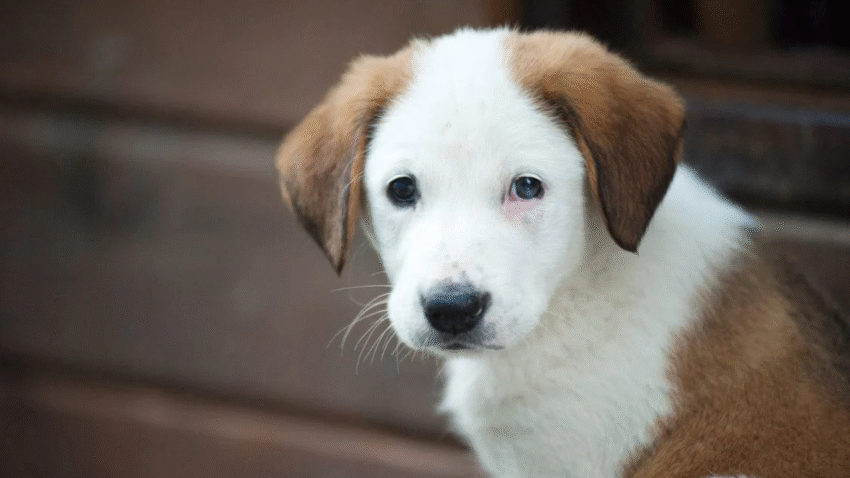Introduction
Think older dogs can’t learn new tricks—or unlearn bad ones? Think again. While breaking bad habits in older dogs may take more time and patience than with puppies, it’s absolutely possible. Whether your senior dog barks excessively, begs at the table, pulls on the leash, or jumps on guests, these behaviors can be changed with consistency and positive reinforcement. In this guide, you’ll learn how to break bad habits in older dogs while building trust and improving your dog’s quality of life.
Why Older Dogs Develop Bad Habits
Just like people, dogs develop habits over time—some good, some not so good. These behaviors may be caused by:
- Inconsistent training in earlier years
- Changes in environment or routine
- Unintentional reinforcement (e.g., giving treats when begging)
- Health issues causing discomfort or anxiety
- Lack of mental or physical stimulation
Fortunately, dogs of any age can learn new behaviors—it just requires patience, repetition, and the right techniques.
Step-by-Step Guide to Breaking Bad Habits
1. Identify the Specific Habit
Start by pinpointing the behavior you want to change.
Examples of common bad habits in older dogs:
- Barking at visitors or noises
- Jumping on people
- Pulling on the leash
- Begging for food
- Chewing inappropriate objects
- Ignoring commands
Write down when and where the behavior occurs, what triggers it, and how you usually respond.
2. Understand the Root Cause
Behavior is communication. Ask yourself:
- Is the dog bored or under-stimulated?
- Are they anxious or reacting to stress?
- Have they been unintentionally rewarded for the behavior?
Understanding the “why” behind the habit helps you apply the right strategy to change it.
3. Rule Out Health Issues
Sometimes, bad behavior stems from pain or illness.
- Arthritis, hearing loss, cognitive decline, or dental problems may cause behavior changes.
- A normally friendly dog may growl if touched where it hurts.
- Excessive barking or house soiling can be signs of cognitive dysfunction.
Always consult your vet before starting a training plan to ensure there are no underlying medical issues.
4. Stop Reinforcing the Bad Habit
Dogs repeat behaviors that work. To stop a bad habit, you must remove the reward—whatever that may be.
Examples:
- If your dog begs and you give them food: stop feeding from the table.
- If they bark and you yell: your attention might be reinforcing the behavior. Ignore and redirect instead.
- If they jump on guests and get petted: have guests turn away and ignore until your dog is calm.
Removing the reward is step one. Replacing the habit is step two.
5. Replace the Habit With a Positive Alternative
Don’t just say “No”—show your dog what to do instead.
Examples:
- Instead of barking at the door, teach “Go to your bed” or “Quiet” with a reward.
- Instead of jumping, reward your dog for sitting when people enter.
- Instead of leash pulling, train loose-leash walking using stop-and-go or treat luring.
Give your dog a job they can succeed at—then reward it every time.
6. Use Positive Reinforcement
Older dogs respond best to kind, consistent training.
- Reward the behavior you want with treats, praise, toys, or affection.
- Keep training sessions short (5–10 minutes) and positive.
- Always end on a win—even if it’s something simple like “sit” or eye contact.
Dogs don’t outgrow the desire to earn your approval—they just need clear, consistent feedback.
7. Be Patient and Consistent
Older habits take time to change. Stick with your training plan and:
- Stay consistent with rules—no exceptions
- Use the same cues or commands
- Ensure everyone in the household follows the same system
- Celebrate small improvements each week
Progress might be slow, but with consistency, your dog will adjust.
Common Mistakes to Avoid
1. Expecting Quick Fixes
Older dogs may need more repetition than puppies. Don’t give up if you don’t see instant results.
2. Using Punishment
Yelling, leash jerks, or harsh corrections often increase anxiety and worsen behavior. Use positive, reward-based methods.
3. Being Inconsistent
If you allow bad behavior sometimes but correct it other times, your dog will get confused. Set clear boundaries.
4. Ignoring Mental Needs
Older dogs need mental enrichment too. Boredom can lead to barking, pacing, or chewing. Use puzzle toys, new routes, or short training games to keep their minds active.
5. Forgetting Physical Limitations
Bad behavior might be tied to aging. A dog that growls when lifted may be in pain. Modify expectations and use vet-approved solutions when needed.
Extra Tips & Recommendations
Tip 1: Focus on One Habit at a Time
Don’t overwhelm your dog by trying to fix everything at once. Choose the most disruptive habit and focus on it for 2–3 weeks.
Tip 2: Use Management Tools
Prevent bad behavior while you train by:
- Using baby gates to restrict access
- Keeping your dog on a leash indoors
- Removing triggers when possible
Management helps break the habit while your dog learns the new behavior.
Tip 3: Keep Training Fun
Use a happy voice, mix in games, and reward with your dog’s favorite things. Training should be a bonding experience—not a chore.
Tip 4: Work With a Trainer If Needed
If behavior persists or worsens, seek help from a certified positive reinforcement dog trainer. They can provide personalized strategies for your senior dog’s needs.
Conclusion
It’s never too late to help your dog become the best version of themselves. Breaking bad habits in older dogs takes time, consistency, and empathy—but it’s absolutely possible. Focus on positive reinforcement, replace bad habits with better ones, and always rule out health concerns. With patience and love, your senior dog can learn new skills and enjoy a more peaceful, rewarding life with you.
📌 Bookmark this guide and refer back to it as you retrain and reconnect with your older pup—because every dog deserves a chance to grow.
